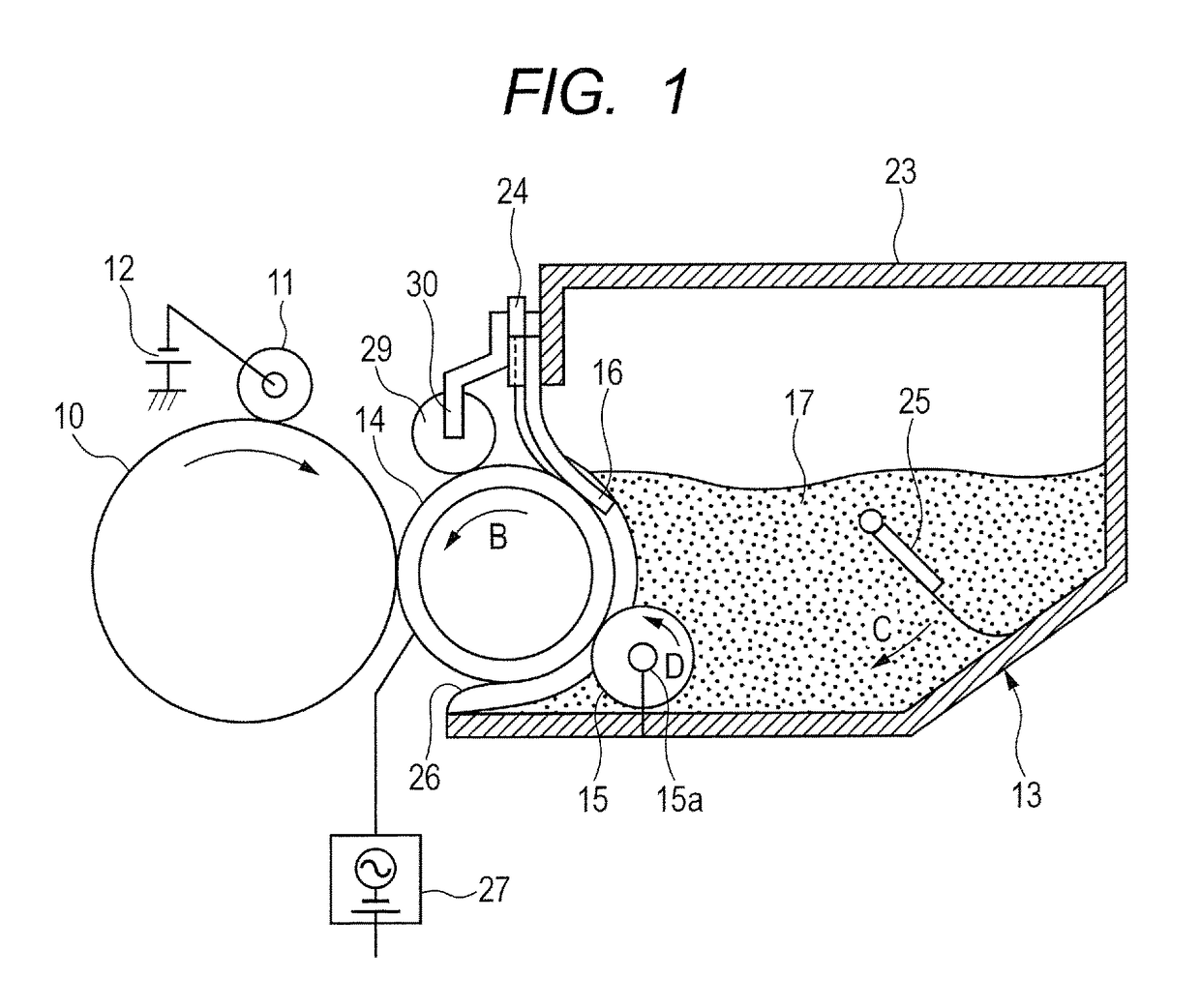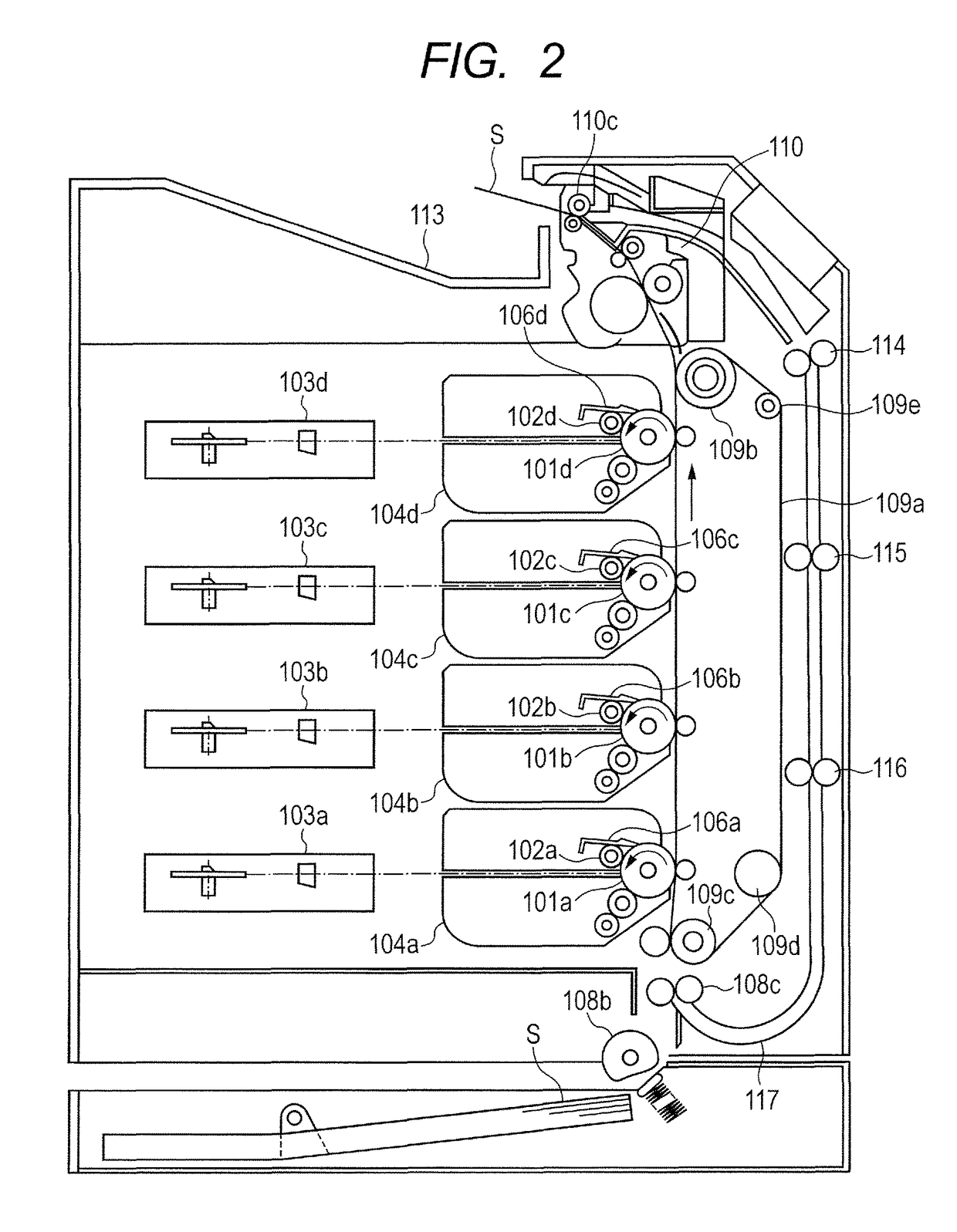Toner
a technology of toner and flowability, applied in the field of toner, can solve the problems of unevenness in image density, maintenance of toner flowability, etc., and achieve the effects of hardly causing a reduction in image density, reducing the cost of toner, and satisfying the chargeability
- Summary
- Abstract
- Description
- Claims
- Application Information
AI Technical Summary
Benefits of technology
Problems solved by technology
Method used
Image
Examples
synthesis example 1
Dispersion Liquid of Resin Particles A
(Step 1: Synthesis of Resin a)
[0192]The following monomers were loaded into a reaction vessel provided with a stirrer, a condenser, a thermometer, and a nitrogen introducing tube, 0.03 part by mass of tetrabutoxy titanate was added as an esterification catalyst, and the mixture was allowed to warm to 220° C. and to react for 5 hours with stirring under a nitrogen atmosphere.
[0193]
Bisphenol A-propylene oxide (2 mol) adduct55.0 parts by massEthylene glycol 7.0 parts by massTerephthalic acid21.0 parts by massIsophthalic acid18.0 parts by massTrimellitic anhydride 4.5 parts by mass
[0194]Next, while a pressure in the reaction vessel was reduced to from 5 to 20 mmHg, the reaction was further performed for 5 hours. Thus, a resin a was obtained. Part of the resin a was extracted, and its glass transition temperature Tg2 and acid value were measured. Table 1 shows the physical properties.
[0195](Step 2: Production of Dispersion Liquid of Resin Particles A...
synthesis examples 2 to 7
Dispersion Liquids of Resin Particles B to G
[0199]Dispersion liquids of resin particles B to G were produced in the same manner as in the production of the dispersion liquid of the resin particles A except that the kinds and usages of the raw materials were changed as shown in Table 1. Table 1 shows the physical properties of the resultant resin particles B to G.
synthesis example 8
Dispersion Liquid of Resin Particles H
(Step 1: Synthesis of Resin h)
[0200]100.0 Parts by mass of methyl ethyl ketone was loaded into a reaction vessel provided with a stirrer, a condenser, a thermometer, and a nitrogen introducing tube, and its temperature was increased to 80° C. under a nitrogen atmosphere. Next, 3.0 parts by mass of t-butyl peroxy-2-ethylhexanoate was added as a polymerization initiator to a mixture formed of the following monomers, and the whole was dropped to the reaction vessel over 2 hours with stirring.
[0201]
Styrene96.0 parts by mass Methyl methacrylate2.2 parts by massMethacrylic acid1.8 parts by mass
[0202]Next, a polymerization reaction was performed for hours while the temperature was held. After the reaction solution had been cooled, reprecipitation purification was performed by dropping the reaction solution in hexane. The resultant was filtered and dried to provide a resin h. Part of the resin h was extracted, and its glass transition temperature Tg2 an...
PUM
| Property | Measurement | Unit |
|---|---|---|
| acid value | aaaaa | aaaaa |
| median diameter | aaaaa | aaaaa |
| pore size | aaaaa | aaaaa |
Abstract
Description
Claims
Application Information
 Login to View More
Login to View More - R&D
- Intellectual Property
- Life Sciences
- Materials
- Tech Scout
- Unparalleled Data Quality
- Higher Quality Content
- 60% Fewer Hallucinations
Browse by: Latest US Patents, China's latest patents, Technical Efficacy Thesaurus, Application Domain, Technology Topic, Popular Technical Reports.
© 2025 PatSnap. All rights reserved.Legal|Privacy policy|Modern Slavery Act Transparency Statement|Sitemap|About US| Contact US: help@patsnap.com



